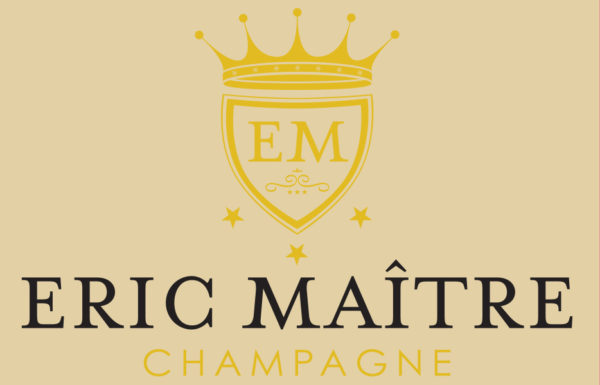Champagne de Sousa (Certified Organic & Biodynamic)
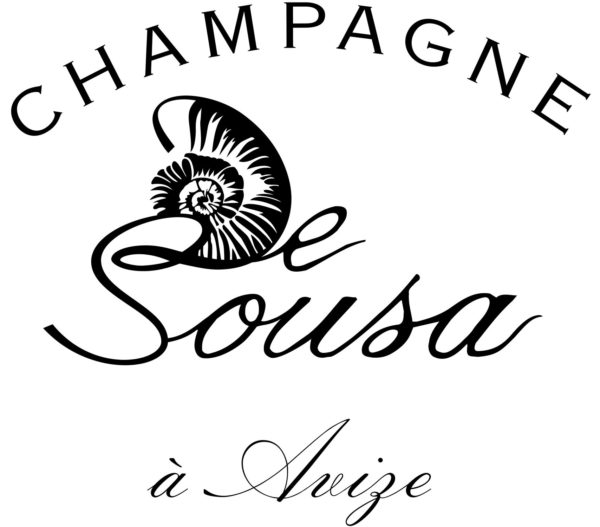
The Estate
Located in the heart of the prestigious Côte des Blancs, Champagne de Sousa has been in existence for 3 generations. Spanning 11 hectares, the vines are planted in the renowned Grands Crus of Avize, Cramant, and Oger. Winemaker Erick de Sousa and his family are devoted to authenticity and quality, and their cultivation of older vines (50+ years), use of organic fertilizer, and respect for the terroir have produced exceptional wines at bargain prices since 1986. Certified organic since 2010 and certified Demeter biodynamic since 2013.
The Terroir
- AOC: Champagne
- Production: 70-75,000 bottles De Sousa and 30,000 Zoémie De Sousa
- Founded: Prior to 1890
- Acreage: 11 Ha
- Layout: 42 different lots
- Geology: 100% Chalk
Cultivation
Domaine de Sousa is committed to using older vines to produce excellent champagnes. For its cuvees prestiges, grapes are only selected from vines that are more than 50 years old, with very small yields (25-30% less than the appellation, for 8,000 vines per ha). For its other vintages, an average of 70% of vines 25 years or older are used. These vines produce small yields, but result in a strong expression of the soil, and good maturity of grapes.
These older vines have roots called “pivots” which descend up to 10 or 12 meters to extract salts and trace elements from the chalky soil. The deeper the root is, the farther away it is from fertilizers, and the more it extracts nutritive elements from the soil, which guarantees high quality grapes.
- Fertilizers: Organic fertilizers authorized by EC regulations
- Pruning: Chablis – Cordon de Royat
- Grapes: 30% Pinot Noir, 10% Pinot Meunier, 60% Chardonnay (70% old vines)
- Average Age of Vines: Over 45 years of age
- Grafting: 41 B
- Yield per ha: according to the appellation, about 60 hectoliters per ha
- Plantation density: 8,000 vines/ha
- Plantation of New Vines: Only when necessary to replace older vines
- Antibotrytis Treatment: None
- Insecticide Spraying: Limited; only when necessary
The Wine-Making Process
Erick De Sousa, a subtle wine-maker, regulates the temperature at 18°C, in order to preserve the aroma of his wines. The 5.5 ha vineyard is harvested completely by hand, as late as possible, so as to pick the ripest grapes with the strongest fragrances.
When making his wine, he uses traditional methods taught to him by his father (a wine producer from a long line of them) who opted for malolactic fermentation to soften his wines. He also applies the old technique of a -4°C cold period with the aim of obtaining the clearest possible Champagne. Erick also applies his family know-how to the blending of the old wines to balance his wines and get consistent quality.
- Origin of yeast: Technical Oenological Center
- Fermentation time: 15 to 20 days
- Chaptalization: When necessary to obtain 11% alcohol
- Temperature Regulation: Immersed cooling coil
- Fermentation Temperature: 18°C
- Vats: Coated steel end barrels
- Cuvee Wine: 75% in 1992, 100% since then
- Filtration: Lightest possible
- Wine-maker: Erick De Sousa
- Oenological Advisor: James Darsonvilles
Fermentation
Vinification in coated steel vats preserves the authenticity of the soil. Domaine de Sousa managed to have one year of stock for the blendings. Since 1995, vinification is done in small oak barrels to give matter to the wine.
Maturation
In the chalk cellar, the temperature is maintained at a consistent temperature of 10°C. The wine matures slowly in the darkness and perfect quietude.
2.5 years of production are kept in cellar as a buffer stock. The remuage is carried out manually.

Champagne Brut Tradition NV
Grape Varieties: 50% Chardonnay, 40% Pinot Noir, 10% Pinot Meunier
Location: Vallee de la Marne, Cote des Blancs, region d’Epernay
Soil: Clay and chalk
Average Age of the Vines: 25-30 years old
Viticulture: Organic and biodynamic. Horse plowing.
Harvest: 100% manual
Vinification: 100% in tank. No filtration/collage.
Cellaring: 3-5 years
Serving Temperature: 8-10°C
Tasting Notes: This majority Chardonnay Champagne is lively and refreshing, with notes of white flowers, citrus fruits, ripe pears, and red berries.
Food Pairing: Seafood, cheese, poultry, salty crackers.

Brut Rosé NV
Grape Varieties: 92% Chardonnay de Grauves 1er Cru, and 8% Pinot Noir d’Ay Grand Cru
Soil: 100% Chalk
Average Age of the Vines: 25-30 years old
Viticulture: Organic and biodynamic. Horse plowing.
Harvest: 100% Manually done
Vinification: 100% in tank, no filtration or fining.
Cellaring: 3-5 years
Serving Temperature: 8-10°c
Food Pairings: Salted crackers, desserts with red fruit
Tasting Notes: Fresh, full, and fruity. The Chardonnay lends aromas of white flowers and a slight minerality, while the Pinot Noir gives notes of ripened berries.

Champagne Grand Cru Brut Réserve Blanc de Blancs
Grape Varieties: 100% Chardonnay
Terroir: Cramant, Avize, Oger, Mesnil sur Oger and Chouilly Grand Cru
Soil: 100% Chalk
Average Age of the Vines: 43 years old
Viticulture: Organic and biodynamic. Horse plowing.
Harvest: 100% Manually done
Vinification:100% in tank. No filtration or fining
Cellaring: 3-5 years
Serving Temperature: 8-10°c
Food Pairings: Seafood, cheeses, salted crackers
Tasting Notes: This Champagne will delight you with its freshness, its elegant finesse, and its pure minerality. Buttery notes of brioche, along with ripe citrus on the palate.

Champagne Grand Cru Cuvée 3A
Grape Varieties:
50% Chardonnay d’Avize–Located at the heart of the Côte des Blancs, Avize is a village classified as Grand Cru Chardonnay with soils comprised of the purest chalk in all of Champagne. It is also home to belemnite fossils, which date back millions of years and lend freshness, minerality, and finesse to this wine. This cuvée is made up of a selection of grapes harvested from 50-year-old vines, which are then carefully vinified in 225-liter oak barrels.
25% Pinot Noir d’Aÿ–A village classified as Grand Cru Pinot Noir, Aÿ is located where the Marne Valley meets the Mountain of Reims. The slopes’ unique, full southern exposure and irregular topography allow the Pinot Noir grape to express its aromas of ripe fruit with power and finesse. These vineyards are planted with ancient varietials of Pinot Noir that produce small fruit with unique aromas. This historic village boasts sedimentary and limestone soils in which there is a high proportion of chalk.
25% Pinot Noir d’Ambonnay–Ambonnay, a village classified as a Grand Cru Pinot Noir, is located on the Mountain of Reims-a vast, forest covered plateau where the grape vines are planted in chalky soils. The forest plays the role of balancing the cold evening air that descends onto the plateau with the warm air produced during the day that rises toward the summit. The vines used were originally planted in the 1950s; they have low yields, but the grapes show greater maturity and more concentration. Unlike Chardonnay, a fragile, delicate varietal, Pinot Noir is vigorous and is well-adapted to limestone soils to yield wines that stand out for their power and consistency. The aromas are very elegant, boasting red berry notes.
Name: Avize, Aÿ, and Ambonnay are the only three villages in Champagne classified as Grand Cru whose name begins with an “A”. This explains how this cuvée got its name, but what makes it unique is its composition of 50% Chardonnay from Avize blended with 50% Pinot Noir from Aÿ and Ambonnay.
Terroir: Cote des Blanc and Montagne de Reims
Soil: 100% Chalk
Average Age of the Vines: 25-30 years
Viticulture: Organic and biodynamic. Horse plowing.
Harvest: 100% manually done
Vinification: 50% in tank and 50% in oak barrel. No filtration or fining.
Cellaring: 3-8 years
Serving Temperature: 8-10°c
Food Pairing: Seafood, cheeses, poultry
Tasting Notes: The Cuvée 3A weds the finesse of the Chardonnay to the fullness of the Pinot Noir. Notes of lemon and pineapple on the nose, and buttery hints from the partial oak aging. There are also notes of blackcurrant and raspberry.

Champagne Grand Cru Cuvée des Caudalies
Grape Varieties: 100% Chardonnay
Terroir: Côte des Blancs en Grand cru
Soil: 100% chalk
Average Age of Vines: More than 60 years
Viticulture: Organic and biodynamic. Horse plowing.
Harvest: 100% manually done
Vinification: 100% oak barrels. No filtration or collage.
Cellaring: 8-15 years
Serving Temperature: 8-10°C
Food Pairings: Seafood, aged cheeses.
Tasting Notes: Pale gold in color. The nose is elegant, delicately punctuated by woodsy aromas. This polished Champagne offers creamy texture and harmonious structure. The oak notes are present but well integrated.

Cuvée des Caudalies, Avize, Les Pierres Vaudons
Location: Avize, Grand Cru in the Côte des Blancs. Located to the south/southeast of Épernay.
Lieu Dit: Les Pierres Vaudons is a plot situated on the southern edge of Grand Cru Avize, just above Grand Cru Oger.
Grape Variety: 100% Chardonnay
Average Age of the Vines: 50+ years old
Viticulture: Organic and biodynamic. Horse plowing.
Vinification: A selection of the best juices from the pressing of old vines. 10 months of vinification in oak barrels. Use of indigenous yeasts and no filtration. Batonnages in barrels and 2 poignettages (shaking/moving of the bottles) in the cellar. Stabilization in the cellar after 12 months of disgorgement.
Aging: 7 years maturation in cellar
Cellaring: 15-20 years
Winemaker Tasting Notes: “Pale gold color. At the start, a rich expression of dried fruits, biscuits, and almond cookies. Beyond that, more root elements are defined: green anise, fennel, wet stone, and copper. After breathing for a bit, syrupy and liqueur-like essences (limoncello, acacia syrup) are revealed, with hints of mushroom, cigar, and blond tobacco. On the palate, there is a fatty richness and almost nuttiness. Notes of blond caramel, dried leaves, and earthy mushrooms.”

Cuvée des Caudalies, Le Mesnil, Les Chetillons
Location: Le Mesnil-sur-Oger, Grand Cru in the Côte des Blancs. Located to the south/southeast of Épernay.
Lieu Dit: Les Chetillons is a small plot situated on a hillside in Le Mesnil-sur-Oger facing east/northeast.
Grape Variety: 100% Chardonnay
Average Age of the Vines: 50+ years old
Viticulture: Organic and biodynamic. Horse plowing.
Vinification: A selection of the best juices from the pressing of old vines. 10 months of vinification in oak barrels. Use of indigenous yeasts and no filtration. Batonnages in barrels and 2 poignettages (shaking/moving of the bottles) in the cellar. Stabilization in the cellar after 12 months of disgorgement.
Aging: 7 years maturation in cellar
Cellaring: 15-20 years
Winemaker Tasting Notes: “Golden yellow color. The first aromas are immediate and precise: carbon and pencil lead. This is followed by fresh cut white flowers, spring humus, sweet spices, iodine, lemony salt, apricot, mirabelle plum, and butter cookie. The finish is slightly smoky, with hints of pure gray salt and the sweet fragrances of white truffles and cashew nuts. Tenderness, richness, and smoothness contrast the palate with a tense tangy flavor, sharpened by green citrus, and yellow and green apples.”

Champagne Grand Cru Brut Cuvée des Caudalies Rosé
Grape Varieties: 90% Chardonnay d’Avize and 10% Pinot d Noir d’Aÿ
Terroir: Côte des Blancs and Montagne de Reims Grand Crus
Soil: 100% Chalk
Average Age of the Vines: More than 60 years old
Viticulture: Organic and biodynamic. Horse plowing.
Harvest: 100% manually done
Aging: 100% oak barrels. No filtration or collage.
Cellaring: 8-15 years
Serving Temperature: 8-10°C
Food Pairings: Oysters, veal, poultry, fruit-based desserts
Tasting Notes: Cuvée des Caudalies Rosé will delight you with its finesse and subtle aromas of fresh raspberries and kirsch cherry, as well as its buttered and toasted notes brought by its aging in oak barrels.

Champagne Grand Cru Mycorhize Blanc de Blancs Extra Brut
Overview: The use of horse and plow among the vines minimizes soil compaction, thereby contributing to the development of mycorrhizae. Mycorrhizae, or “mycorhize“, is the name for a symbiotic relationship between a fungus and plant. The fungus grows on the roots of the vine, which gives the vine increased water and nutrient absorption capabilities. In turn, the fungus benefit from the carbohydrates formed from photosynthesis of the vine.
Grape Varieties: 100% Chardonnay
Terroir: Les Hauts Nemery Grand Cru d’Avize
Soil: 100% chalk
Average Age of Vines: More than 60 years old
Viticulture: Organic and biodynamic. Horse plowing.
Harvest: 100% manually done
Vinification: 100% oak barrels. No filtration or collage.
Cellaring: 8-15 years
Serving Temperature: 8-10°c
Food Pairings: Seafood, poultry, aged cheeses, sushi
Tasting Notes: This is an elegant Champagne; the minerality and aromas of nuts, acacia, linden, honey, and a subtle hint of raspberry. It has vibrant energy that reflects the terroir of Avize.

Champagne Grand Cru Cuvée Umami
Overview: This Cuvée from De Sousa is inspired by but also completely embodies the term “umami”, which originates in Japan. Umami is the 5th basic flavor, along with sweetness, saltiness, sourness, and bitterness, and is hard to define exactly, but is best described as being a delicious, savory taste. This champagne can be described as such as it is characterized by its rich, velvety texture, depth of flavor, elegant minerality, and sapidity.
The Vines: The biodynamic techniques employed by the winemakers contribute greatly to the resulting flavor of the wine by increasing the life of the soil, facilitating the development of mycorrhizae which aid the vines in water retention and nutrient absorption, producing grapes that are richer in sugar, maturing acids, and harvesting grapes that have reached their full physiological maturity. The vines used for this Cuvée are more than 50 years old with low yields.
Viticulture: Organic and biodynamic. Horse plowing.
Vinification: The vinification process incorporates indigenous yeasts, after which the wine is matured in 225L oak barrels, with stirring of the fine lees.
Grape Varietals: 60% Chardonnay, 40% Pinot Noir
Soil: Chalk
Tasting Notes: The Umami has an intense and captivating bouquet, with caramel and toasted bread aromas. The Chardonnay grapes contribute elegant notes of apple and pear, while the Pinot Noir grapes lend black currant and raspberry savors. This champagne leaves a soft, long-lasting sensation on the palate, and has a delicate salinity which awakens the taste buds and causes slight salivation in the mouth. The density and vibrant minerality of this wine is imparted by the quality of sugars, glycerol, ripe acids, and alcohol.

Champagne Chemins des Terroirs Brut
Grape Varieties: 40% Chardonnay, 40% Pinot Meunier, 20% Pinot Noir
Terroir: Vallée de la Marne, Coteaux du Vitryat, and région d’Epernay
Soil: Clay and chalk
Average Age of Vines: 15-40 years
Viticulture: Organic and biodynamic. Horse plowing.
Harvest: 100% manual
Vinification: 100% tank
Cellaring: 3-5 years
Serving Temperature: 8-10°c
Food Pairings: Cheese, poultry, salty crackers, fish.
Tasting Notes: Ideal as an aperitif, this champagne will delight you with notes of citrus fruit, apples, candied pears, and quince. Beautiful presence in the mouth, with a balance between enveloping warmth and invigorating freshness.

Champagne Avec Le Temps Blanc De Blancs Extra Brut Grand Cru
Grape Varieties: 100% Chardonnay
Terroir: Avize, Oger en Grand Cru
Soil: 100% chalk
Average Age of Vines: 35 years
Viticulture: Organic and biodynamic. Horse plowing.
Harvest: 100% Manual
Vinification: 100% tank
Serving Temperature: 8-10°c
Cellaring: 3-5 years
Food Pairings: Sea food and cheese
Tasting Notes: Notes of brioche, white flower and citrus essence. On the palate, one finds round notes and the vivacity of the terroir chalky. It will accompany seafood products with refinement.

Coteaux Champenois Blanc
Grape Variety: 100% Chardonnay
Terroir: Avize Grand Cru
Soil: 100% chalk
Lieu Dit: Pierres Vaudons
Average Age of the Vines: 35 years old
Viticulture: Organic and biodynamic. Horse plowing.
Harvest: 100% Manual
Aging: 11 months in oak barrels. No filtration or fining.
Cellaring: 3-5 years
Serving Temperature: 10-12°C
Food Pairings: Seafood, especially sushi, and various cheeses
Label: The label was made by a Burgundian artist: Joyce Delimata. The vines in the image come from the plots selected for the elaboration of the Coteaux Champenois.

Coteaux Champenois Rouge
Grape Variety: 100% Pinot Noir
Terroir: Ambonnay Grand Cru
Lieu Dit: Les Haut des Bermonts
Soil: 100% chalk
Average Age of the Vines: 70 years old
Viticulture: Organic and biodynamic. Horse plowing.
Harvest: 100% Manual
Vinification: Total destemming. Gentle maceration and pumping over for 8 days. Indigenous yeast.
Aging: 100% oak barrels. No fining or filtration.
Cellaring: 3-5 years
Serving Temperature: 12°C
Food Pairings: Pork, veal, wild fowl
Label: The label was made by a Burgundian artist: Joyce Delimata. The vines in the image come from the plots selected for the elaboration of the Coteaux Champenois.
Champagne François Secondé

Overview
For centuries, Sillery has been known as the region which produces some of the most sought after Champagnes in the world. Right at the heart of this renowned terroir, you will find Champagne François Secondé, a vineyard covering an area of just over 5 hectares and located in Sillery, Mailly-Champagne, Puisieulx, and Verzenay. François Secondé is an independent wine maker (vigneron independant), and the only récoltant manipulant (one whose grapes are not sourced, but come from his own vineyard) and producer of pure Sillery Champagne.
History of the Vineyard
At the age of 14, François Secondé left school and started to work as an apprentice in a vineyard. He bought his first vineyard in 1972, and in 1976, he increased his plot to 3 hectares. With the help of his wife Anne-Marie, he started producing his own Champagne. Today, Champagne François Secondé vineyard is 5.5 hectares and harvests two grape varietals: 2/3 Pinots noir, and 1/3 Chardonnay. The vines are 37 years of age on average and are farmed in a sustainable way with respect to both nature and man. As of 2023, François Secondé uses zero herbicides or insecticides on the entire vineyard.
History of Sillery
Sillery became renowned at the beginning of the 17th century thanks to Nicolas Brûlart–owner of Sillery Castle and vineyard. He was Henry IV’s Chancellor and this connection helped him to get his wine tasted by the king and his inner circle. At its peak in the 18th century, Sillery’s reputation was reported by Edme Béguillet, attorney to the parliament of Dijon, oenologist, and famous for his dislike of Champagne’s wine makers. He said of Sillery wines that “their quality is so superior that only the king deserves them”.

Champagne Brut Grand Cru NV
Cru: Sillery
Average Age of Vines: 38 years
Location: Montagne de Reims
Grape Varietals: 2/3 Pinot Noir, 1/3 Chardonnay, and 30% reserve wines
Vinification: Malolactic fermentation
Maturation: 18-24 months with manual riddling
Base Vintage: 2017
Dosing to Disgorgement: 8 g/l
Characteristics: Golden yellow hue, highlighted by a string of sparkling bubbles. The nose is mineral and floral with notes of freshly baked pastries. The palate is balanced with hints of rich, lightly toasted brioche, and exotic fruit. To be served chilled at a temperature of about 8 °C.
Awards:
- Silver Medal Decanter World Wine Awards 2019
- Silver Medal 2012 Independant Winemakers Competition
- Silver Medal 2014 Brussels World Competition

Champagne Brut Rosé NV
Cru: Sillery
Average Age of Vines: 38 years
Location: Montagne de Reims
Grape Varietals: 100% Pinot Noir with 20% reserve wines
Vinification: Malolactic fermentation
Maturation: 24 months with manual riddling
Base Vintage: 2017
Dosage to Disgorgement: 8 g/l
Yield: 4,000 bottles per year
Characteristics: Clean, well-defined rosé; floral, subtle, quite pure, with a creamy texture on the palate. The bubbles have finesse and linger on the tongue. Serve as an aperitif or with desserts made with red fruit.
Awards:
- Gold Medal 2014 Paris General Agriculture Competition
- Gold Medal 2015 Paris General Agriculture Competition
- Silver Medal 2015 Independant Winemakers Competition

Sermiers 1er Cru Blanc de Blancs
Cru: Sermiers 1er Cru
Average Age of the Vines: 20 years old
Location: This plot is located on the north side of the Montagne de Reims
Grape Varieties: 100% Chardonnay
Vinification: Completed in tanks with the use of malolactic fermentation.
Aging: Aged in vats and in barrels. 18 months in cellar. Manual riddling.
Annual Yield: 1,000 bottles per year
Tasting Notes: Mineral and floral, with a creamy texture and very fine bubble.
Serving Suggestion: Perfect when served as an aperitive or with a meal. Serve in large glasses in order for the Champagne to be fully expressed.

Champagne Blanc de Blancs Sillery Grand Cru Millésime
Cru: Sillery Grand Cru
Location: Montagne de Reims
Age of the Vines: 47 years old (this Champagne is produced from 1 single plot)
Grape Varieties: 100% Chardonnay
Vinification: Malolactic fermentation in tanks followed by a period in barrels. No filtration.
Aging: The wine is left to rest in the cellar for a minimum of 36 months with manual riddling.
Tasting Notes: Clear, brilliant golden color with intense and persistent bubbles. The bouquet is powerful and fresh with aromas of acacia, candied fruit, and honeysuckle. The mouth is elegant, with notes of white flowers, spice, and citrus. Very beautiful aromatic persistence; balanced and harmonious.
Serving Suggestion: Excellent as an aperitif or to accompany lobster or white meats.

Champagne Blanc de Noirs Sillery Grand Cru La Loge
Cru: Sillery Grand Cru
Location: Montagne de Reims; this cuvée is produced from the finest Pinot Noir plots in Sillery
Average Age of the Vines: 38 years old
Varietal Blend: 100% Pinot Noir
Vinification: Malolactic fermentation in tanks, followed by a brief period in barrels.
Aging: 18-24 months with manual riddling
Average Yield: 2,000 bottles/year
Tasting Notes: Golden yellow color. The fineness of this Champagne is evident beginning with the quality of the bubbles which form a persistent mousse at the rim. Powerful yet refined on the nose, the bouquet opens with notes of red fruit and fresh pastries. On the palate, there is a delightful effervescence which complements the unctuous, fruity quality of this Champagne. Very well balanced cuvée which can be consumed either as an aperitif or as an accompaniment to the main meal.
Awards:
- Silver Medal IWC (International Wine Challenge) 2019
- Silver Medal DECANTER World Wine Awards 2019

Champagne Puisieulx Grand Cru Les Petites Vignes
Location: The village of Puisieulx was classified as Grand Cru; the vineyard has a surface area of less than 18 hectares and is positioned towards the southeast. The soil is light and chalky.
Average Age of Vines: 47 years
Grape Varietals: 50 % Chardonnay, 50 % Pinot Noir
Vinification: Alcoholic fermentation and malolactic fermentation
Maturation: 24 months minimum
Characteristics: Intense nose and fine aromas of mature fruit with a touch of vanilla. Delicate on the palate with a beautiful minerality

Coteaux Champenois Sillery Blanc
Cru: Sillery
Grape Varietals: Chardonnay and Pinot Noir from Sillery
Vinification: Vinification in wooden vats and barrels with malolactic fermentation; unfiltered
Maturation: Aged in wooden barrels for at least one year before bottling
Characteristics: Golden color, aromas of citrus, vanilla, and exotic fruit on the nose. The attack is fresh, and this vintage holds its body well on the finish. Pairs well with cold starters, oysters, as well as fresh chevre. Served chilled at 7-8 ° C.

Coteaux Champenois Sillery Rouge
Cru: Sillery Grand Cru
Grape Varietals: 100% Pinot Noir
Average Age of the Vines: 60 years old
Location: Montagne de Reims
Vinification: Long fermentation with 2 pumpings per day; Vinification in wooden vats and barrels with malolactic fermentation; Unfiltered.
Maturation: Aging in wooden barrels and vats for at least one year
Characteristics: Ruby red color; this wine is fresh, fruity, and light. Drink now with grilled meat or red fruit desserts. Served chilled at 8 °C

Clavier Brut
Grape Varieties: 65% Chardonnay, 35% Pinot Noir
Terroir: Montagne de Reims
Average Age of Vines: 42 years old
Vinification: Malolactic fermentation
Cellaring: 24 months
Production: 2,000 bottles per year
Tasting Notes: A complex palette of aromas dominated by citrus fruit and slight butter notes.
Awards:
Silver Medal DECANTER World Wine Awards 2022
Champagne Lacourte-Godbillon (Biodynamic)
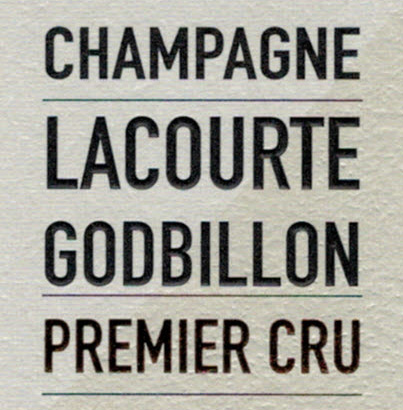
The Estate
Located in the Premier Cru village of Écueil on the west bank of the “Petite Montagne de Reims”, these vines have belonged to the Lacourte & Godbillion families for generations. The very first planting of Champagne vines was prior to 1947, however Jean-Guy Lacourte and Claudine Godbillon had their very first harvest under the name Lacourte-Godbillion in 1968. In 2006, almost 40 years later, Richard Desvignes and Geraldine Lacourte decided to leave their executive city jobs to come back to the family vineyard. This new life of wine making has been a total revelation for them, and they strive to follow the philosphy of their ancestor, Jean-Guy Lacourte: “Only the highest quality grapes can produce a high quality wine.” The estate now includes 20.5 acres of vines (95% planted in Écueil, 5% in the neighboring village of Les Mesneux).
Cultivation
The vineyards are worked exclusively by Lacourte-Godbillion’s team. They plow during the winter to break up the soil, and mow the grass between the vine rows to maintain and develop soil vitality. The vineyards are certified organic and demeter; there is no use of any pesticides, weedkillers, or other anti-botrytis treatments. Their goal is to control the number of buds and shoots so that new growth is consistent and well spaced out. Care is taken to separate out the shoots; keeping the vine canopy well aerated with no overcrowding of leaves or grape bunches results in only the highest quality grapes. Harvest is done manually.
Surface Area: 8 ha
Average Age of Vines: 30 years old
Grapes Varietals: 85% Pinot Noir, 15% Chardonnay
This particular terroir is characterized by an incredibly diverse sub-soil. Some sections are predominantly sandy over a layer of deep chalk, others are composed of “Sparnacian” clay and shallow chalk at the bottom of the hillside, similar to the soils of Les Mesneux.
Vinification
Lacourte-Godbillon has a clear vision for their winery: a wine must reflect its terroir. The wood for the oak barrels either comes from Ecueil’s forest or from Champagne-Ardenne. The harvest from each plot is pressed and vinified separately and the juice is not pumped, but moved by gravity as far as possible to allow the resulting wine to retain its intrinsic qualities.
Fermentation
The fermentation process is temperature-controlled and monitored daily. The wine is left in tank or barrel in contact with the lees for the autumnal season. No racking is done in order to develop complexity and unique personality. For the wine fermented in oak barrels, no stirring or filtering is carried out. The chilling process is done outside to utilize the seasonal cold temperatures.
Maturation
The bottles are aged in the cellar for 30 months and up to 7 years. This is followed by an average resting time of 3-6 months after the yeast deposits have been removed by disgorgement. The optimum dosage for each wine in each year is decided by several trial tastings. The objective is to find the best possible balance as each wine is a living being with its own character.

Champagne Brut 1er Cru Terroirs d'Écueil
Grape Blend: 85% Pinot Noir, 15% Chardonnay
Viticulture: The soil is worked mechanically; plowing under the vines, and grass between the rows.
Harvest: Manual
Average Age of the Vines: 30 years old
Vinification: Temperature controlled stainless steel tanks, malolactic fermentation carried out
Aging: Minimum of 30 months on lees and 3 months after disgorgement
Cellaring Potential: 3-5 years
Serving Suggestion: An excellent choice for all occasions, ideal served as an apéritif. Serve at 8°-9° C.

Brut Rosé
Grape Blend: 100% Pinot Noir
Cru: Ecueil
Average Age of the Vines: 25 years old
Viticulture: Ploughing under the vines and grass between the rows.
Vinification: 90% in thermo-regulated stainless steel tanks, 10% in oak barrels (228l).
Aging: Minimum of 4 years on lees and 6 months after disgorgement.

Champagne Millésime 1er Cru
Grape Blend: Pinot Noir, Chardonnay
Soil: Sand and clay sub-soil. Mid-slope position
Average Age of the Vines: 30 years old
Viticulture: The soil is worked mechanically.
Harvest: Manual harvesting.
Vinification: Temperature controlled stainless steel tanks, malolactic fermentation prevented for the Chardonnay.
Aging: 6 years minimum in our cellars.
Aging Potential: 5 years
Tasting Notes: Golden straw color. The nose has intense aromas of stone fruits (mirabelle plum), toast, and brioches notes. On the palate, this wine is ample and intense on the attack followed by freshness and tension with notes of citrus.
Food Pairings: Veal chops cooked medium-rare, sea bass
Serving Temperature: 10°-12° C

Champagne 1er Cru Chaillots
Grape Blend: 100% Pinot Noir
Vineyard: “Chaillots” plot planted in 1966, massal selection of pinot d’Ecueil, sand on the surface and tuf in the depth. South exposition, ploughing under the vines and grass between the rows.
Vinification: Fermentation in 300 l oak barrels, oak from Ecueil’s forest. No malolactic fermentation. Use of gravity exclusively, not filtered, not fined, natural cold stabilization.
Aging: Minimum of 48 months on lees and 6 months after disgorgement.
Tasting: A lovely balance of yellow plum fruit and an incisive, well-judged structure from the barrel fermentation. Open and long texture. Lily and smoke and the whiff of baking, with a fresh lemon-oil note on the end.

Champagne 1er Cru Chaillots Hautes Vignes
Grape Blend: 100% Chardonnay
Vineyard: Mid-slope “Chaillots” and “Hautes Vignes” plots, aged 40 years, ploughing under the vines and grass between the rows.
Vinification: Fermentation in 228 liter oak barrels. No malolactic fermentation. Use of gravity exclusively, not filtered, not fined, natural cold stabilization.
Aging: Minimum of 36 months on lees and 6 months after disgorgement.
Tasting Notes: Gentle nose of lemon-butter and smoldering sweet smoke. Starts urgently, gaining instant attention, so fresh and dry! Complex and creamy. Gorgeous, sweet, sponge-cake and almond notes to sign off.

Champagne 1er Cru Extra Brut M.A.M. Monts Âme-Migerats
Vineyard Plots: This Champagne is produced from plots in Ecueil and Mesneux: Mont Âme & Migerats.
Soil: Chalk (Mont Âme) and light clay (Migerats)
Average Age of the Vines: 55 year old Sélection Massales
Grape Blend: 100% Pinot Noir
Vinification: Base wine aged in 300-liter barrels after pressing and spontaneous fermentation, no malo. No fining or filtration.
Aging: Aged for five years on lattes.
Tasting Notes: Complex with lemony, buttery, and pastry notes. Vibrant saline finish.

Champagne 1er Cru Mi-Pentes
Grape Blend: 100% Pinot Noir
Vineyard Plots: Mid-slope plots, 40 years average age, ploughing under the vines, and grass between the rows.
Vinification: 60% in thermo-regulated stainless steel tanks, 40% in oak barrels (228l), no malolactic fermentation.
Aging: Minimum of 40 months on lees and 6 months after disgorgement.
Tasting Notes: Concentrated, intense nose of yellow fruits, sweet spice. Precise structure and meaty substance of Pinot d’Ecueil. Vibrant, high pitched, and persistent texture. Accomplished modern champagne, wholly expressive of Ecueil.
Champagne Rodez (Biodynamic)
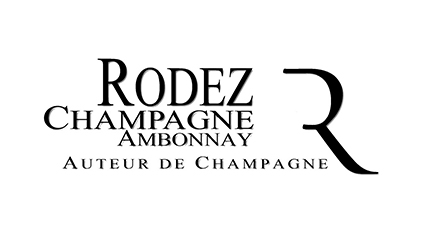
The Estate
The Rodez family has been making wine for nine generations, beginning as far back as 1757. The estate of Champagne Rodez is located in the Grand Cru that is Ambonnay, the heart of Pinot Noir country, and spans an area of 6.12 hectares. The property consists of 35 parcels of vines, and the grape varietals planted are 62% Pinot Noir and 38% Chardonnay. The vineyards are planted at a fairly high altitude (about 130 meters), and are situated on a clay-limestone soil, two factors which are ideal for growing Pinot Noir.
Eric Rodez, current vineyard manager and head oenologist for the estate, has worn many hats in his day. Not only was he at one time the Mayor of Ambonnay, but he was also formerly an oenologist at Krug where he developed his winemaking/blending methods that would later be employed on his own estate. Eric, along with his wife Martine and son Mickael, manages all aspects of the winemaking process at Champagne Rodez.
It was while traveling in Alsace and other wine growing regions that Eric gained an appreciation for organic and biodynamic vineyard practices. It is through these methods that he believes the resulting wine truly expresses the characteristics of the terroir. Eric hesitates to use the word organic, because he is not certified, but as a grower he uses no pesticides, fertilizers, or synthetic sprays on his plants. In 2012, Champagne Rodez was the first French agricultural domaine to receive the Haute Valeur Environmentale certificate for their efforts towards organic and biodynamic farming and water management on the estate. In the vineyard, Eric plows his soils and limits his yields through careful pruning. Vinification is done in either oak barrels or enameled steel vats. The annual production of the estate is about 45,000 bottles.
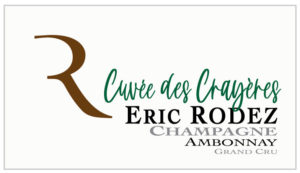
Champagne Grand Cru Cuvée des Crayères
Overview: Champagne of body and spirit made by the marriage of 60% Pinot Noir and 40% Chardonnay. Straight, round, generous, the Cuvée des Crayères is made on average from a dozen different wines from 4 to 5 different vintages, with 50 to 55% of the wines vinified in small oak barrels, with 65 to 70% reserve wines helping to bring homogeneity.
Grape Varieties: Pinot Noir, Chardonnay
Vineyard Plots: Terroir d’Ambonnay-Les Grandes Ruelles, Les Bouités, La pierre aux Larrons, Les Cheminots, Les Secs, Les Fournettes, Les Agusons, Les Beurys, Les Hauts Tourets
Average Age of the Vines: 30 years old
Vinification: Out of tank for 42%, out of barrels 58%. Partial malolactic fermentation (with malo 65% and without 35%)
Tasting Notes: This Champagne has a delightful golden hue with luminous highlights. The nose reveals floral and mineral notes and, upon aeration, red and white fruit savors. The palate is fresh and generous, playing with notes of spring berries.
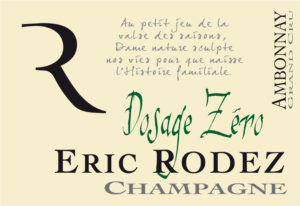
Champagne Grand Cru Dosage Zéro
The Vines: In the vineyard, Eric plows his soils and limits his yields through careful pruning.
Grape Varieties: Pinot Noir, Chardonnay
Vinification: Vinification takes place in either oak barrels or enameled steel vats.
Aging: 80% of the wines are matured in small oak barrels and are composed of 30% reserve wines
Tasting Notes: Golden color. Long, complex, but also sensual, the nose has hints of white fruit. The palate is creamy with notes of exotic fruit on the finish. This cuvee combines power and strength without added sugar.
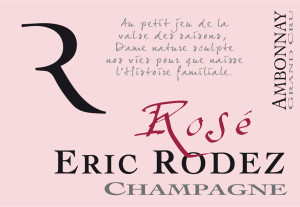
Champagne Grand Cru Rosé Brut
Overview: This brut Champagne is the achievement of the association of the Pinot Noir of maceration (40%), Pinot Noir (30%) and Chardonnay (30%), the latter bringing delicacy and elegance. The winemaker also resorts to the stored wines, up to 40%.
Grape Varieties: Pinot Noir of maceration, Pinot Noir, Chardonnay
Vineyard Plots: Les Grandes Ruelles, Le Moulin, Les Bouités, La Pierre aux Larrons, Les Cheminots, Les Hauts Tourets
Average Age of Vines: 32 years
Vinification: Out of tank for 20%, out of barrels 80%. Partial malolactic fermentation (with malo 49% and without 51%)
Tasting Notes: The color is marked by the maceration of Pinot Noir. The nose is complex, powerful, long, with a predominance of red berry notes. The palate is smooth and powerful, with hints of subtle oak.
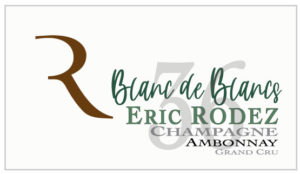
Champagne Grand Cru Blanc de Blancs
Overview: This is a brut Champagne produced exclusively out of several harvests of Chardonnay, from different years. For this cuvée, the winemaker usually blends 5 or 6 vintaged productions in order to ensure the same delicacy along the years. This Champagne is very flowery, delicate, and sensual.
Vineyard Plots: Terroir d’Ambonnay, “Regions of Heart in Mid-Coast”: Les Secs, La Loge, Les Genettes, Les Morins, Les Champsaults. “Regions of Spirit”: Les Crayères, Les Agusons, Les Cheminots, La Grande Ruelle
Grape Variety: 100% Chardonnay
Average Age of the Vines: 31 years old
Vinification: Out of tank for 18%, out of barrels 82%. Partial malolactic fermentation (with malo 20% and without 80%)
Tasting Notes: It is of a subdued gold color, with touches of green. The nose is both fruity and floral, and expresses hints of chestnut after swirling. The attack is good, vinous, with an elegant gustatory persistence.
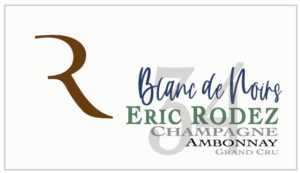
Champagne Grand Cru Blanc de Noirs
Overview: This brut Champagne is produced from Pinot Noir harvests only. For this cuvée, the winemaker generally blends 5 to 6 vintaged productions to make sure the cuvée will keep its character. It is even better-balanced and meatier than the Blanc de Blancs. It is complex, with a slight hint of red fruit, very elegant, offering a longer finish.
Grape Varieties: 100% Pinot Noir
Vineyard Plots: Terroir d’Ambonnay, “Regions of heart in Mid-Coast”: Les Beurys du Haut, Les Goisses, Les Secs, Les Fournettes, Les Genettes, Les Hauts Touret, Les Vaux Saint Basles. “Regions of Spirit”: La Pierre aux Larons, Les Bouités, Les Grandes Ruelles
Average Age of the Vines: 33 years old
Vinification: Out of tank for 20%, out of barrels 80%. Partial malolactic fermentation (with malo 30% and without 70%)
Tasting Notes: Light gold in color, with shades of copper. It offers a fruity nose, together with flavors recalling spring after rotation. The attack is dense, meaty, filling the palate with flavors of citrus fruit.
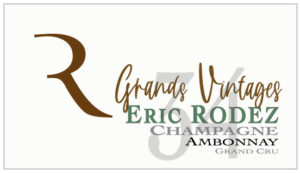
Champagne Grand Cru Cuvée des Grands Vintages
Overview: This Champagne is exclusively made out of the juices from several years’ first pressings of the best vintaged productions. Among the choices of wines offered by Champagne Rodez, the Cuvée des Grands Vintages is the Champagne one wishes to offer to celebrate the important moments of one’s life, with its golden color, with hints of copper and sometimes of light orange.
Grape Varieties: Pinot Noir, Chardonnay
Average Age of the Vines: 34 years old
Vineyard Plots: Les Secs, Les Beurys, Les Goisses, Les Genettes, Les Vaux Saint Basle, Les Fournettes, Le Noyer Saints Pys, Les Morrins
Vinification: Out of barrels 100%; no malolactic fermentation
Tasting Notes: The expressive nose will immediately reveal enticing aromas of toffee and marmalade. It benefits from a good cellaring potential, the elegance of which will be appreciated through a full, powerful, and flavorsome palate.
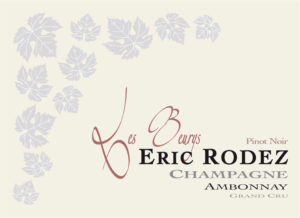
Champagne Grand Cru Pinot Noir Les Beurys
Overview: This wine is the culmination of work begun over 25 years ago and expresses the soul of the noble terroir from which it is produced. The role of the winemaker is limited to respecting the integrity of and working with the terroir.
Grape Varieties: 100% Pinot Noir
Vineyard Plots: Les Beurys
Exposure: East
Average Age of the Vines: 35 years old
Vinification: In small oak barrels, no malolactic fermentation, no artificial refrigeration, no filtration
Tasting Notes: This wine has a sensuality which comes from the terroir and is supported by a minerality that comes from the chalk present in the soils
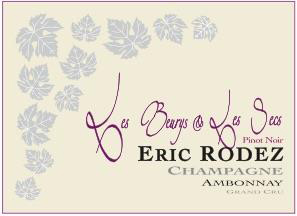
Champagne Grand Cru Pinot Noir Les Beurys & Les Secs
Grape Variety: 100% Pinot Noir
Vineyard Plots: Les Beurys 95%, Les Secs 5%
Exposure: Les Beurys – East; Les Secs – South.
Soil before Chalk: 35 cm
Average Age of the Vines: 38 years old
Vinification: 100% in small oak barrels. No malolactic fermentation, no industrial cold stabilization, or filtration.
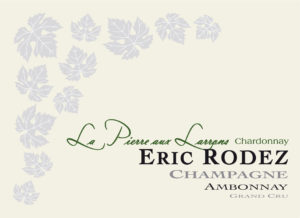
Champagne Grand Cru Chardonnay La Pierre Aux Larrons
Overview: The result of over 25 years of work on the domain, the «Lieux Dits» are Champagne cuvees that reveal the complexities of the soil from which they originate. The role of the winemaker is limited to respecting the original musical integrity. The name of the plot, “La Pierre aux Larrons,” refers to a stone located in a wasteland, hearkening back to the Gallo-Roman era.
Grape Varieties: 100% Chardonnay
Soil: 55 cm deep layer of soil before chalk
Exposure: East
Average Age of the Vines: 42 Years
Harvest: October
Vinification: 100% in small oak barrels. No malolactic fermentation, no industrial cold stabilizing, no filtration – but a lot of passion.
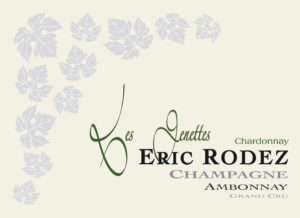
Champagne Grand Cru Chardonnay Les Genettes
Grape Varieties: 100% Chardonnay
Vineyard Plots: Les Genettes is a plot in Ambonnay with a southeastern exposure and slightly deeper soils than Les Beurys.
Exposition: Southeast
Soil Before Chalk: 45 cm
Average Age of the Vines: 39 years old
Harvest: September
Vinification: In small oak barrels, no malolactic fermentation, no artificial refrigeration, no filtration
Aging: 5 years on the lees
Post-Disgorgement Aging: 1 Year
Tasting Notes: Fresh notes of crisp apple, zesty grapefruit, and balanced oak at the start. 5 years of aging on the lees lends a roundness and lovely texture to the mouthfeel. Elegant minerality and a long, lingering finish.
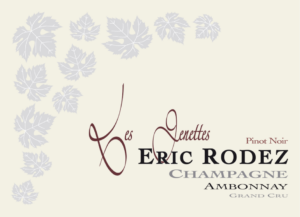
Champagne Grand Cru Pinot Noir Les Genettes
Overview: This wine is the culmination of work begun over 25 years ago and expresses the soul of the noble terroir from which it is produced. The role of the winemaker is limited to respecting the integrity of and working with the terroir.
Grape Varieties: 100% Pinot Noir
Vineyard Plots: Les Genettes is a plot in Ambonnay with a southeastern exposure and slightly deeper soils than Les Beurys.
Average Age of the Vines: 41 years old
Vinification: In small oak barrels, no malolactic fermentation, no artificial refrigeration, no filtration
Tasting Notes: Tasty and sweet, this wine sees all its generosity enhanced by minerality provided by the methods of the winemakers.
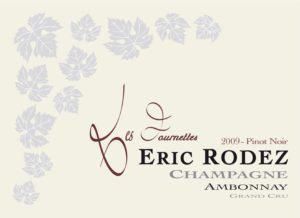
Champagne Grand Cru Pinot Noir Les Fournettes
Vineyard Plots: Les Fournettes is a southeast-facing parcel on the western side of the village where the topsoils are deeper, about 65 centimeters.
Grape Varieties: 100% Pinot Noir
Average Age of the Vines: 27 years old
Tasting Notes: Chalky minerality, elegant vinosity, and fruitiness.
Vinification: Vinified in small oak barrels; no malolactic fermentation
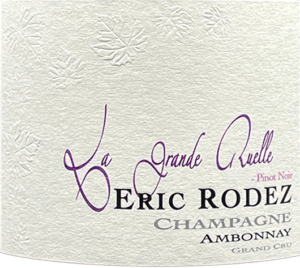
Champagne Grand Cru Pinot Noir La Grande Ruelle
Overview: This Champagne is a pure expression of this single plot of terroir called La Grande Ruelle.
Exposure: East
Average Age of the Vines: 35+ years old
Grape Variety: 100% Pinot Noir
Vinification: In small oak barrels. No malolactic fermentation, no cold stabilization, no filtration.
Aging: Sur lies for 5 years.
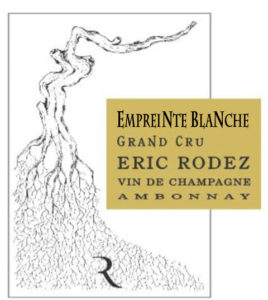
Champagne Grand Cru Cuvée Empreinte Blanche
Overview: Always vintage, this Champagne is produced from a blend of 5 to 7 parcels of the domain. Empreinte expresses the winemaker’s vision of the vintage in Ambonnay.
Vinification: In small oak barrels, no malolactic fermentation, no cold stabilization, no filtration.
Grape Varieties: 100% Chardonnay
Vineyard Plots: Le Noyer Saint Pys, Les Secs, Les Agusons, Les Champsaults
Average Age of the Vines: 39 years old
Tasting Notes: The single grape variety of Empreinte de Terroir seeks only to emphasize the characteristics of the vineyard terroir, across the vineyards, and waltzing across the vintages. For some vintages, the comparison of varieties bring an extra dimension. Clear, bright gold color. The bouquet expresses floral notes and fragrances of young, white peach. The finish is long with lovely, woodsy notes of bark and vanilla.
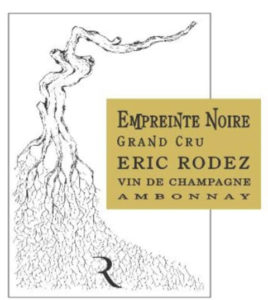
Champagne Grand Cru Cuvée Empreinte Noire
Overview: Always vintage, this Champagne is produced from a blend of 5 to 7 parcels of the domain. Empreinte expresses the winemaker’s vision of the vintage in Ambonnay.
Grape Varieties: 100% Pinot Noir
Vineyard Plots: Les Gennettes, Les Beurys, La Goisse, Les Bouités
Average Age of the Vines: 42 years old
Vinification: 100% small oak barrels; no malolactic fermentation, no cold stabilization, no filtration.
Tasting Notes: The single grape variety of Empreinte de Terroir seeks only to emphasize the characteristics of the vineyard terroir, across the vineyards, and waltzing across the vintages. For some vintages, the comparison of varieties bring an extra dimension.
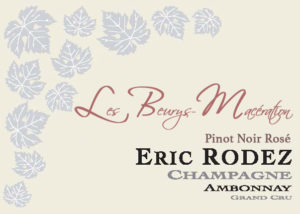
Champagne Grand Cru Rosé de Maceration Les Beurys
Grape Varieties: 100% Pinot Noir
Plot: Les Beurys
Exposition: East
Soil Before Chalk: 35 cm
Average Age of the Vines: 40 Years
Harvest: September
Vinification: Maceration for 3 days. 100% vinified in small oak barrels. No malolactic fermentation.
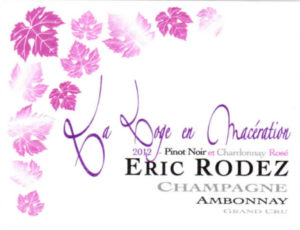
Champagne Grand Cru Pinot Noir & Chardonnay Rosé La Loge en Macération
Grape Varieties: 50% Pinot Noir, 50% Chardonnay
Vineyard Plots: Les Fournettes, Noyer Saint Pys
Exposition: South
Soil (before chalk): 55 cm
Average Age of the Vines: 42 years old
Harvest: September
Vinification: Maceration for 2 days. 100% in barrels. No malolactic fermentation.
Tasting Notes: Notes of ripened red and black fruits permeate the bouquet, complemented by an infusion of spices. This is an exceptionally elegant and delicate Champagne – perfect on its own or served as an aperitif.
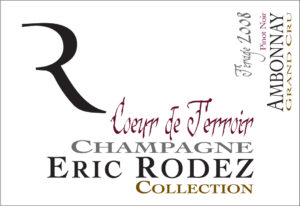
Champagne Grand Cru Pinot Noir Coeur de Terroir Tirage 2008
Grape Varieties: 100% Pinot Noir
Vineyard Plots: Les Beurys, Les Goisses, Les Secs, Les Fournettes, Les Genettes, Les Bas Tourets, Les Vaus Saint Basless, La Pierre aux Larrons, La Grande Ruelle
Average Age of the Vines: 32 years old
Bottling Date: Spring 2008
Vintage Blend: 45% 2007, 30% 2006, 13% 2005, 8% 2004, 2% 2002, 2% 2000
Vinification: 75% in barrels. Partial malolactic fermentation (35%)
Dosage: 4 g/L
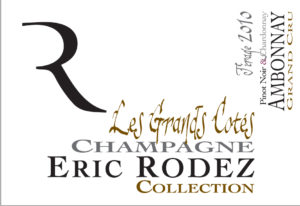
Champagne Grand Cru Pinot Noir & Chardonnay Les Grands Cotés Tirage 2010
Bottling Date: Spring 2010
Grape Variety: 58% Pinot Noir, 42% Chardonnay
Vineyard Plots: Terroir d’Ambonnay – Les Grandes Ruelles, Le Moulin, Les Champsaults, Le Noyer Saint Pys, Les Secs, Les Fournettes, La Pierre aux Larrons, Les Agusons, Les Beurys
Average Age of the Vines: 29 years old
Vintage Blend: 42% 2009, 26% 2008, 11% 2007, 9% 2006, 10% 2005, 2% 2004
Vinification: 35% in barrels. Partial malolactic fermentation (35%)
Dosage: 5 g/L
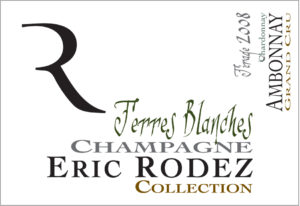
Champagne Grand Cru Chardonnay Terres Blanches Tirage 2008
Grape Variety: 100% Chardonnay
Vineyard Plots: Terroir d’Ambonnay – Le Noyer Saint Pys, Les Morins, Les Genettes, Les Champsaults, Les Secs, Les Bermonts, Les Crayeres, Les Agusons, Les Cheminots.
Average Age of the Vines: 32 years old
Vintage Blend: 41% 2007, 20% 2006, 17% 2005, 15% 2004, 3% 2003, 4% 2002
Vinification: 70% in barrels. Partial malolactic fermentation (30%)
Dosage: 5 g/L
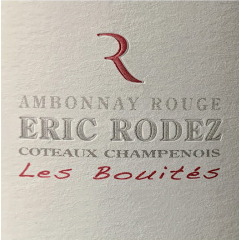
Coteaux Champenois Ambonnay Rouge Les Bouités
Overview: Long before it was famous for the effervescence of its wines, Champagne produced still wines. In the 17th century, the vineyard extended over more than 55,000 hectares, and white wines represented the majority of production. With this red wine, Coteaux Champenois, the winemaker would like to express other sensory notes derived from the vineyard.
Grape Variety: 100% Pinot Noir
Vineyard Plots: Les Bouités
Harvest: September
Vinification: 100% in oak barrels
Tasting Notes: Elegant, fruity, and fresh. The tannins are well balanced and the mouthfeel is remarkable.
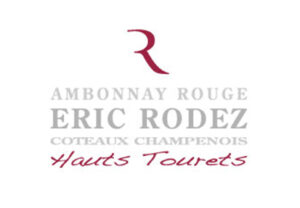
Coteaux Champenois Ambonnay Rouge Hauts Tourets
Overview: Long before it was famous for the effervescence of its wines, Champagne produced still wines. In the 17th century, the vineyard extended over more than 55,000 hectares, and white wines represented the majority of production. With this red wine, Coteaux Champenois, the winemaker would like to express other sensory notes derived from the vineyard.
Grape Variety: 100% Pinot Noir
Vineyard Plots: Les Hauts Tourets
Vinification: 100% in oak barrels
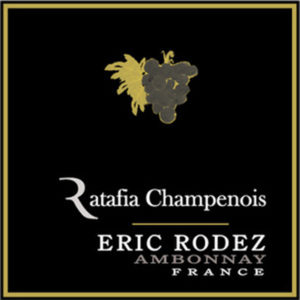
Ratafia Champenois
Winemaker Tasting Notes: “Ratafia is an authentic moment of pure sweetness and pleasure. First discovered in the 13th century, It is made traditionally from Champenois grape juice with the addition of alcohol. Real amber nectar, Ratafia de Champagne reveals a nose full of finesse with pear and honey aromas. Its rounded, silky, and agreeably vivacious mouthfeel leaves an impression of freshness all the way up to a long finish. Lightly spiced and brimming with fruit flavors.”
Release Date: Spring 2022
Grape Variety: 100% Pinot Noir
Vintage Blend: A blend of vintages between 2015 and 2020.
Aging: 100% in barrel.



















